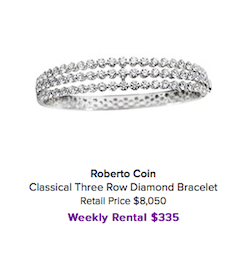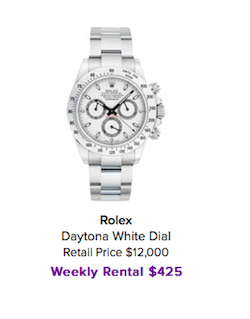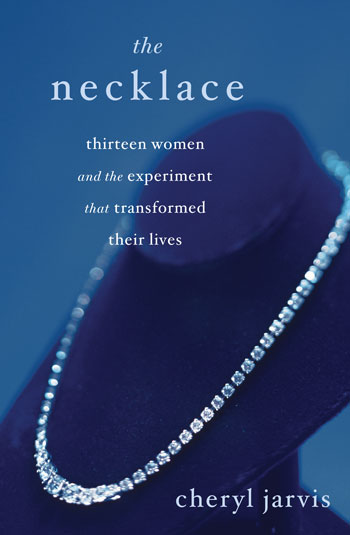Articles and News
For Rent! A Taste Of Luxury Now Can Build Long-Term Customers Later | April 15, 2015 (0 comments)

Merrick, NY—In the fashion world, three’s a trend. Even such tony publications as Harpers’ Bazaar and the New York Times admit that once you see a particular style three times, it’s a bona-fide trend. So when you see it more than three times—especially many more—you can bank on it.
Therefore, it’s official: renting, rather than owning, luxury goods is a big trend and growing bigger. And when something has real relevance to people’s lives—like sharing—it’s more likely to become a long-term trend, not just a short-term fad.
The sharing economy is growing about 25% each year, says Doug Stephens of The Retail Prophet. From services like Uber and Airbnb to luxury apparel and accessories from Rent The Runway and Bag, Borrow, or Steal, renting allows cash-strapped consumers to experience luxury, even if only for a brief taste. And while Millennials are leading the charge, they’re far from the only ones tapping into this trend. Even super-affluent consumers sometimes find the idea of temporary ownership more appealing than permanent ownership.
Millennials, of course, are a generation with the proverbial champagne tastes and beer budgets—albeit artisan beer budgets. Their Boomer parents grew up with a lot and they gave their Millennial children even more. But the net worth of Millennials in their twenties is almost 60% lower than their Boomer parents had in their twenties, says trend forecaster Grace Ehlers in The Robin Report.
Yet Millennials have a very high standard of living as a result of their upbringing, and they’re not inclined to give it up just because they can’t afford it. Millennials have learned to simply bypass their limited net worth through membership programs that temporarily provide almost anything they could want, says Ehlers. Where Boomers bought modestly and traded up as their wealth grew, Millennials are going straight for the top, even if they can only experience it in small doses.
No need to own a home abroad if you can rent one on Airbnb. No need to splurge on a designer gown or handbag if you can borrow one for the occasion for a fifth of the cost.
More proof that luxury sharing is a bona-fide trend? It’s expanded past the boundaries of cash-strapped Millennials and has moved into some pretty exclusive turf, says ad agency J. Walter Thompson. Sites like Time & Place and 3rd Home are an upscale version of Airbnb, where members pay thousands to join and thousands more to borrow other members’ luxury vacation homes instead of someone else’s small apartment.
Indeed, the phenomenon can be highly relevant for luxury jewelers. Jennifer Hyman, CEO of Rent The Runway was a keynote speaker at the recent Women In The Know conference sponsored by the Women’s Jewelry Association. Hyman, who founded the rental site with Harvard Business School classmate Jennifer Fleiss, said the concept is so simple it’s amazing nobody else had thought of it—especially given how many places there are for men to rent formalwear.
Van Gundy Jewelers in Ventura and Camarillo, CA, was ahead of the curve in the sharing economy. The jeweler was the original purveyor of a necklace that 22 women pitched in to buy and timeshare. (Read more here.) Since then, the jeweler has done some jewelry rentals, but hasn’t made it a focus of business.
Early adopters of the sharing economy: 13 women pitched in to co-own this $22,000 diamond riviere necklace. Their adventure became a book, above.
“I’ve rented pieces to people I know, but it’s not a [regular] part of our business,” Priscilla Van Gundy told The Centurion. “Maybe the mother of the bride who’s a good customer, will wear a bracelet for the wedding,” she said. For a while, Van Gundy’s did let brides take a piece to wear for their wedding if they bought their bridal set from Van Gundy Jewelers, she said. Brides would leave a deposit on the borrowed piece and return it after the wedding, but the jeweler hasn’t kept up with it and doesn’t do it as much anyore.
“I haven’t heard of anything done on the scope of the necklace, and I’ve traveled around a lot,” says Van Gundy. She’s seen similar arrangements for bags and less-costly pieces, but nothing on the scope of the diamond necklace that he husband sold to the group. (She was once part of the ownership group but no longer is.)
“I think there’s a fear factor above a certain price point,” she told The Centurion. Meanwhile, she has amped up the store’s focus on estate jewelry. “Millennials love that stuff!” she says. “You have to do something different [to capture Millennials’ interest], even than you did four years ago.”
The best way for a consumer to fall in love with a brand is to experience it, said Hyman. By renting, say, a hot pink Helmut Lang dress for $35, they get to experience the brand, feel great in something that suits their figure and earns lots of compliments, and eventually become Helmut Lang customers in their own right. Hyman said many RTR customers do go on to become loyal customers of the brands they sampled.
Michelle Graff, editor-in-chief of National Jeweler, asks jewelers’ opinions of the rental option. It’s a viable idea, she argues in a recent blog, citing jewelry rental site Haute Vault as an example.
For a fairly modest membership fee (ranging from $250 to $500 per year, depending on perks), Haute Vault allows users to rent fine jewelry with values as high as $150,000. Rental isn’t cheap—an 18k gold and diamond constellation necklace rents for $1,765 per week—but it’s a lot less than the $75,600 it costs to own it. A Roberto Coin three-row diamond bracelet rents for $335 per week, vs. $8,050 to own. For the same sums, you can rent (or own) a Cartier Calibre watch, or for $425 you can borrow a Rolex Daytona for a week, vs. buying it for $12,000.


Craving a Rolex but your budget says Timex? Haute Vault offers tony brands like Rolex, Cartier, Roberto Coin, and more for a few hundred a week. Images: HauteVault.com.
Likewise, watch lovers can join Eleven James, a startup site that offers memberships starting at $149/month. That nets the member three different watches to wear for a period of four months each. Higher-level memberships offer more and/or pricier watches such as Audemars Piguet or Vacheron Constantin.
Ehlers wonders why retailers don’t latch onto the rental economy. Like Hyman, she believes that sampling the goods now is a viable way to earning Millennials’ loyalty to your brand now, by fostering a sense of connoisseurship.








